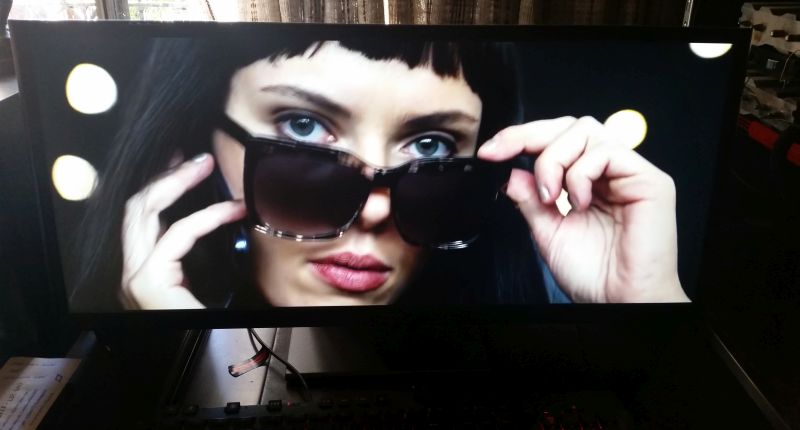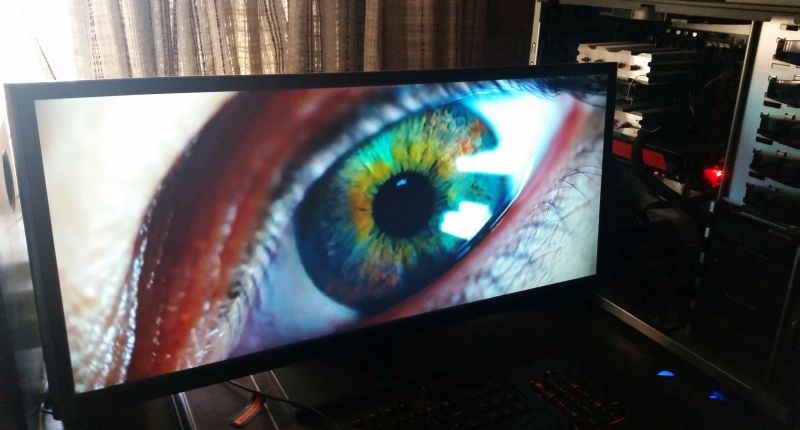Five years ago, launching a decent streaming platform took millions. Now? A teenager with a laptop can build something that reaches millions. That shift…
AOC 29″ UltraWide Monitor Review: wide, beautiful but expensive


The Philips 29″ P-Line monitor spoiled me in terms of the ultra widescreen experience, so I was delighted to be offered the chance to review a competitive model, the 29″ AOC Q2963PM UltraWide.
I had only vaguely heard of AOC to be honest, and had never used any of their products, so the opportunity to explore yet another brand I hadn’t much experience with was a welcome one.
You wouldn’t think you would need something as big as a 21:9 widescreen until you’ve actually used one. While there is still a certain appeal to a dual monitor setup (especially for people like myself who work in the media industry), this does to a certain extent alleviate that necessity and it’s a huge space-saver on your desktop. For games that offer an ultra widescreen option as well, these types of monitors have huge appeal as it expands your gaming experience exponentially.
First Impressions
Right off the bat, this is a fine looking monitor. Although it doesn’t have the adjustable height features of the Philips P-Line, it’s sleek, stylish and doesn’t look excessively plastic like so many other monitors. The build quality perhaps isn’t as high end as some other monitors, but the quality in terms of brightness, while perhaps not quite as bright as the Philips, is good at the default setting.
Display Quality
The LED back-lighting of this monitor makes it quite bright, but without the glare of many monitors in the same range. Bright colours and deep blacks make this an excellent monitor in that sense. As with most monitors you can adjust the brightness, contrast, gamma and so on, as well as fiddling with presets which will adjust everything else for you.

There are also built-in speakers, but I wouldn’t recommend using these. If you have a set of speakers, they’ll definitely sound infinitely better than this rubbish.
When tested with video playback, there was a slight judder to some panning scenes, but not as bad as some other monitors, and overall it did a great job in displaying the movies, especially when the colour was calibrated using the presets.
Controls
There are five buttons that control the monitor. The button interface is quite intuitive, more so than the Philips monitor, but if you’re not so keen on that, you can also download the menu contained on the disc that comes with it, which offers an alternative method of controlling all the usual options such as menu, volume, aspect and source.
Multiple Sources
Yup, you can connect more than one computer to this monitor. In this case the 21:9 aspect ratio is absolutely essential, because you end up with two 4:3 displays side-by-side. That said, and while it’s quite nifty, how often do you actually need to do this? My work setup, for example, means that I have multiple hard drives connected, as well as multiple server connections, so it’s rare that I would need to have two physical computers connected at the same time. There were also occasionally issues when switching between the two displays, with stretched resolutions and having to force certain aspect ratios, which while not a deal breaker (since this isn’t a feature I would use often) is still a bit annoying.

Verdict: While this gorgeous monitor has an extra-wide, bright and beautiful display which can support dual sources, it is rather pricey (US$380), doesn’t scale well with some inputs, has poor-quality built-in speakers and won’t support simultaneous DVI/HDMI connections. But it’s still a good, solid ultra widescreen monitor with great performance options.
Score: 8/10

